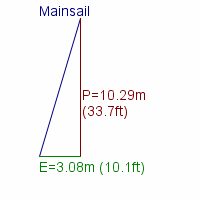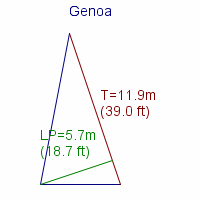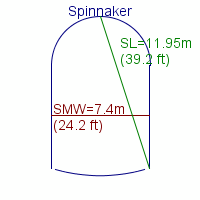Review of C&C 30 E

Basic specs.

Looking for a new boat? Find a C&C 30 E or similar boat for sale
The hull is made of fibreglass. A hull made of fibreglass requires only a minimum of maintenance during the sailing season. And outside the sailing season, just bottom cleaning and perhaps anti-fouling painting once a year - a few hours of work, that's all.
The boat is equipped with 5 berths, a galley and toilet facility.
The interior is like many other boats made of mahogany. Mahogany belongs to the hardwood species, known for being water-repellent and resistant to decay. It has an attractive wood grain and holds wood polish and varnish well.
Note: the boat has also been sold to be self-made/-interiored, which means that the quality of each boat may vary.

The C&C 30 E is built with a masthead rig. The advantage of a masthead rig is its simplicity and the fact that a given sail area - compared with a fractional rig - can be carried lower and thus with less heeling moment.
C&C 30 E may be equipped with an inboard Volvo Penta MD7A diesel engine at 13 hp (9 kW). Calculated max speed is about 4.5 knots
The transmission is a saildrive.
Sailing characteristics
This section covers widely used rules of thumb to describe the sailing characteristics. Please note that even though the calculations are correct, the interpretation of the results might not be valid for extreme boats.
What is Capsize Screening Formula (CSF)?
The capsize screening value for C&C 30 E is 2.05, indicating that this boat would not be accepted to participate in ocean races.
What is Theoretical Maximum Hull Speed?
The theoretical maximal speed of a displacement boat of this length is 6.5 knots. The term "Theoretical Maximum Hull Speed" is widely used even though a boat can sail faster. The term shall be interpreted as above the theoretical speed a great additional power is necessary for a small gain in speed.
The immersion rate is defined as the weight required to sink the boat a certain level.
The immersion rate for C&C 30 E is about 152 kg/cm, alternatively 856 lbs/inch.
Meaning: if you load 152 kg cargo on the boat then it will sink 1 cm.
Alternatively, if you load 856 lbs cargo on the boat it will sink 1 inch.
Sailing statistics
This section is statistical comparison with similar boats of the same category. The basis of the following statistical computations is our unique database with more than 26,000 different boat types and 350,000 data points.
What is Motion Comfort Ratio (MCR)?
The Motion Comfort Ratio for C&C 30 E is 22.2.
What is L/B (Length Beam Ratio)?
The l/b ratio for C&C 30 E is 2.88.
What is Displacement Length Ratio?
The DL-ratio for C&C 30 E is 286 which categorizes this boat among 'medium weight cruisers'.
What is SA/D (Sail Area Displacement ratio)?
The SA/D for C&C 30 E with ISO 8666 reference sail is 15.6, with a 135% genua the SA/D is 18.7.
What is Relative Speed Performance?
The Relative Speed Performance for C&C 30 E is 54
Maintenance
Dimensions of sail for masthead rig.




Are your sails worn out? You might find your next sail here: Sails for Sale
If you need to renew parts of your running rig and is not quite sure of the dimensions, you may find the estimates computed below useful.
| Usage | Length | Diameter | ||
| Mainsail halyard | 27.0 m | (88.7 feet) | 10 mm | (3/8 inch) |
| Jib/genoa halyard | 27.0 m | (88.7 feet) | 10 mm | (3/8 inch) |
| Spinnaker halyard | 27.0 m | (88.7 feet) | 10 mm | (3/8 inch) |
| Jib sheet | 9.2 m | (30.0 feet) | 12 mm | (1/2 inch) |
| Genoa sheet | 9.2 m | (30.0 feet) | 12 mm | (1/2 inch) |
| Mainsheet | 22.9 m | (75.0 feet) | 12 mm | (1/2 inch) |
| Spinnaker sheet | 20.1 m | (66.0 feet) | 12 mm | (1/2 inch) |
| Cunningham | 3.1 m | (10.1 feet) | 10 mm | (3/8 inch) |
| Kickingstrap | 6.2 m | (20.2 feet) | 10 mm | (3/8 inch) |
| Clew-outhaul | 6.2 m | (20.2 feet) | 10 mm | (3/8 inch) |
This section is reserved boat owner's modifications, improvements, etc. Here you might find (or contribute with) inspiration for your boat.
Do you have changes/improvements you would like to share? Upload a photo and describe what you have done.
We are always looking for new photos. If you can contribute with photos for C&C 30 E it would be a great help.
If you have any comments to the review, improvement suggestions, or the like, feel free to contact us. Criticism helps us to improve.
